Foreword xvii
Preface xix
Acknowledgement xxi
About the Contributors xxiii
About the Companion Website xxv
1 Arterial Supply to the Central Nervous System 1
Arterial Supply to the Brain 1
1.1 Basic Pattern of the Main Arteries Supplying the Brain 1
1.2 Basic Pattern of Incoming Branches to the Cerebral Arterial Circle 1
1.3 Species Variations 2
1.4 Summary of the Significance of the Vertebral Artery as a Source of Blood to the Brain 5
1.5 Humane Slaughter 6
1.6 Rete Mirabile 7
Superficial Arteries of the Spinal Cord 8
1.7 Main Trunks 8
1.8 Anastomosing Arteries 8
1.9 Segmental Arteries to the Spinal Cord 10
1.10 General Principles Governing the Distribution of Arteries below the Surface of the Neuraxis 10
1.11 The Deep Arteries of the Spinal Cord 10
1.12 The Problem of Pulsation 11
1.13 Arterial Anastomoses of the Neuraxis 11
2 The Meninges and Cerebrospinal Fluid 13
Meninges 13
2.1 General Anatomy of the Cranial and Spinal Meninges 13
2.2 Anatomy of the Meninges at the Roots of Spinal and Cranial Nerves 14
2.3 The Spaces around the Meninges 14
2.4 Relationship of Blood Vessels to the Meninges 16
2.5 The Filum Terminale 16
2.6 The Falx Cerebri and Membranous Tentorium Cerebelli 16
Cerebrospinal Fluid 16
2.7 Formation of Cerebrospinal Fluid 16
2.8 The Choroid Plexuses 16
2.9 Mechanism of Formation of Cerebrospinal Fluid 17
2.10 Circulation of Cerebrospinal Fluid 17
2.11 Drainage of Cerebrospinal Fluid 19
2.12 Functions of Cerebrospinal Fluid 20
2.13 Blood‐brain Barrier 21
2.14 Collection of Cerebrospinal Fluid 22
2.15 Clinical Conditions of the Cerebrospinal Fluid System 23
3 Venous Drainage of the Spinal Cord and Brain 25
The Cranial System of Venous Sinuses 25
3.1 General Plan 25
3.2 The Components of the Dorsal System of Sinuses 27
3.3 The Components of the Ventral System of Sinuses 28
3.4 Drainage of the Cranial Sinuses into the Systemic Circulation 28
The Spinal System of Venous Sinuses 29
3.5 General Plan 29
3.6 Connections to the Cranial System of Sinuses 29
3.7 Territory Drained by the Spinal System of Sinuses 29
3.8 Drainage of the Spinal Sinuses into the Systemic Circulation 29
Clinical Significance of the Venous Drainage of the Neuraxis 30
3.9 Spread of Infection in the Head 30
3.10 Paradoxical Embolism 30
3.11 Venous Obstruction 30
3.12 Angiography for Diagnosis 31
4 The Applied Anatomy of the Vertebral Canal 33
The Anatomy of Epidural Anaesthesia and Lumbar Puncture 33
4.1 The Vertebrae 33
4.2 Spinal Cord 33
4.3 Meninges 35
4.4 Lumbar Puncture 35
4.5 Epidural Anaesthesia in the Ox 35
4.6 Injuries to the Root of the Tail 36
The Anatomy of the Intervertebral Disc 36
4.7 The Components of the Disc 36
4.8 Senile Changes 38
4.9 Disc Protrusion 38
4.10 Fibrocartilaginous Embolism 41
Malformation or Malarticulation of Vertebrae 41
4.11 The ‘Wobbler Syndrome’ in the Dog 41
4.12 The Wobbler Syndrome in the Horse 41
4.13 Atlanto‐Axial Subluxation in Dogs 42
4.14 Anomalous Atlanto‐Occipital Region in Arab Horses 42
4.15 Other Vertebral Abnormalities in Dogs 42
5 The Neuron 43
The Anatomy of Neurons 43
5.1 General Structure 43
5.2 The Axon 46
5.3 Epineurium, Perineurium and Endoneurium 50
5.4 The Synapse 51
5.5 Phylogenetically Primitive and Advanced Neurons 54
5.6 Axonal Degeneration and Regeneration in Peripheral Nerves 55
5.7 Regeneration and Plasticity in the Neuraxis 58
5.8 Stem Cells and Olfactory Ensheathing Cells 58
5.9 The Reflex Arc 59
5.10 Decussation: The Coiling Reflex 60
6 The Nerve Impulse 63
Excitation and Inhibition 63
6.1 Ion Channels and Gating Mechanisms 63
6.2 The Membrane Potential 64
6.3 The Excitatory Postsynaptic Potential 64
6.4 The Inhibitory Postsynaptic Potential 67
6.5 The Receptor Potential 68
6.6 The End‐plate Potential 69
6.7 Summary of Decremental Potentials 70
6.8 The Action Potential 71
6.9 Concerning Water Closets 73
6.10 Transducer Mechanisms of Receptors 73
6.11 Astrocytes 76
6.12 Oligodendrocytes 76
6.13 Microglia 77
7 Nuclei of the Cranial Nerves 79
General
Principles Governing the Architecture of the Nuclei of the Cranial Nerves 79
7.1 Shape and Position of the Central Canal 79
7.2 Fragmentation of the Basic Columns of Grey Matter 79
7.3 Development of an Additional Component; Special Visceral Efferent 80
7.4 The Cranial Nerves of the Special Senses 82
7.5 Summary of the Architectural Principles of the Nuclei of the Cranial Nerves 82
Names, Topography and Functions of the Cranial Nerve Nuclei 82
7.6 Somatic Afferent Nucleus 82
7.7 Visceral Afferent Nucleus 85
7.8 Visceral Efferent Nuclei 85
7.9 Special Visceral Efferent Nuclei 86
7.10 Somatic Efferent Nuclei 86
Reflex Arcs of the Nuclei of the Cranial Nerves 87
Significance of the Nuclei of the Cranial Nerves in Clinical Neurology 88
8 Medial Lemniscal System 89
Conscious Sensory Modalities, their Receptors and Pathways 89
8.1 Conscious Sensory Modalities 89
8.2 Peripheral Receptors of Touch, Pressure and Joint Proprioception 91
8.3 Pathways of Touch, Pressure and Joint Proprioception 92
Clinical Conditions Affecting the Medial Lemniscal System 94
8.4 Effects of Lesions in the Dorsal Funiculus 94
Pain Pathways 96
8.5 Peripheral Receptors of Pain 96
8.6 Spinothalamic Tract of Man 97
8.7 Spinothalamic Pathways in Domestic Mammals 100
8.8 Spinocervical Tract (Spinocervicothalamic Tract) 100
8.9 Species Variations in the Medial Lemniscal System 100
8.10 Somatotopic Localisation 101
8.11 Blending of Tracts in the Spinal Cord 101
8.12 Summary of the Medial Lemniscus System 101
9 The Special Senses 103
Vision 103
9.1 Neuron 1 103
9.2 Neuron 2 103
9.3 Neuron 3 103
Hearing 106
9.4 Neuron 1 106
9.5 Neuron 2 106
9.6 Neuron 3 106
Balance 107
9.7 Neuron 1 107
9.8 Neuron 2 107
Taste 112
9.9 Neuron 1 112
9.10 Neuron 2 112
9.11 Neuron 3 112
Olfaction Proper: The Sense of Smell 113
9.12 Neuron 1 113
9.13 Neuron 2 114
9.14 Neuron 3 114
Summary of the Conscious Sensory Systems 117
10 Spinocerebellar Pathways and Ascending Reticular Formation 119
10.1 Spinocerebellar Pathways 119
10.2 Ascending Reticular Formation 119
Spinocerebellar Pathways 120
10.3 Hindlimbs 120
10.4 Forelimbs 122
10.5 Projections of Spinocerebellar Pathways to the Cerebral Cortex 123
10.6 Functions of the Spinocerebellar Pathways 124
10.7 Species Variations 124
Ascending Reticular Formation 124
10.8 Organisation 124
Functions of the Ascending Reticular Formation 128
10.9 Arousal 128
10.10 Transmission of Deep Pain 128
10.11 Summary of Spinocerebellar Pathways and Ascending Reticular Formation 132
11 Somatic Motor Systems 135
Somatic Efferent Neurons 135
11.1 Motor Neurons in the Ventral Horn of the Spinal Cord 135
Muscle Spindles 137
11.2 Structure of the Muscle Spindle 137
11.3 The Mode of Operation of the Muscle Spindle 137
11.4 Role of Muscle Spindles in Posture and Movement 139
11.5 Golgi Tendon Organs 139
11.6 Muscle Tone 140
11.7 Motor Unit 141
11.8 Recruitment of Motor Units 141
11.9 Summary of Ways of Increasing the Force of Contraction of a Muscle 142
The Final Common Path 142
11.10 Algebraic Summation at the Final Common Path 142
11.11 Renshaw Cells 142
11.12 Lower Motor Neuron 142
11.13 Integration of the Two Sides of the Neuraxis 143
12 Pyramidal System 145
Pyramidal Pathways 145
12.1 The Neuron Relay 145
Feedback Pathways of the Pyramidal System 148
12.2 Feedback of the Pyramidal System 148
Comparative Anatomy of the Pyramidal System 149
12.3 Species Variations in the Primary Motor Area of the Cerebral Cortex 149
12.4 Species Variations in the Pyramidal System 150
12.5 The Function of the Pyramidal System 150
Clinical Considerations 151
12.6 Effects of Lesions in the Pyramidal System 151
12.7 Validity of the Distinction between Pyramidal and Extrapyramidal Systems 152
13 Extrapyramidal System 153
Motor Centres 153
13.1 Nine Command Centres 153
13.2 The Cerebral Cortex 153
13.3 Basal Nuclei and Corpus Striatum 154
13.4 Midbrain Reticular Formation 155
13.5 Red Nucleus 155
13.6 Mesencephalic Tectum 155
13.7 Pontine Motor Reticular Centres 156
13.8 Lateral Medullary Motor Reticular Centres 156
13.9 Medial Medullary Motor Reticular Centres 156
13.10 Vestibular Nuclei 156
Spinal Pathways 156
13.11 Pontine and Medullary Reticulospinal Tracts 156
13.12 Rubrospinal Tract 158
13.13 Vestibulospinal Tract 159
13.14 Tectospinal Tract 159
13.15 The Position in the Spinal Cord of the Tracts of the Extrapyramidal System 159
13.16 Summary of the Tracts of the Extrapyramidal System 159
14 Extrapyramidal Feedback and Upper Motor Neuron Disorders 161
Feedback of the Extrapyramidal System 161
14.1 Neuronal Centres of the Feedback Circuits 161
14.2 Feedback Circuits 161
14.3 Balance between Inhibitory and Facilitatory Centres 164
14.4 Clinical Signs of Lesions in Extrapyramidal Motor Centres in Man 165
14.5 Clinical Signs of Lesions in the Basal Nuclei in Domestic Animals 166
14.6 Upper Motor Neuron Disorders 166
15 Summary of the Somatic Motor Systems 169
The Motor Components of the Neuraxis 169
15.1 Pyramidal System 169
15.2 Extrapyramidal System 170
15.3 Distinction between Pyramidal and Extrapyramidal Systems 171
Clinical Signs of Motor System Injuries 171
15.4 Functions of the Pyramidal and Extrapyramidal Systems: Effects of Injury to the Motor Command Centres 171
15.5 Upper Motor Neuron 171
15.6 Lower Motor Neuron 172
15.7 Summary of Projections onto the Final Common Path 173
16 The Cerebellum 175
Afferent Pathways to the Cerebellum 175
16.1 Ascending from the Spinal Cord 175
16.2 Feedback Input into the Cerebellar Cortex 175
Arterial Supply to the Brain 177
Summary of Pathways in the Cerebellar Peduncles 178
16.3 Caudal Cerebellar Peduncle 179
16.4 Middle Cerebellar Peduncle 179
16.5 Rostral Cerebellar Peduncle 179
Rostral Cerebellar Peduncle 179
16.6 Vestibular Areas 179
16.7 Proprioceptive Areas 179
16.8 Feedback Areas 180
Functions of the Cerebellum 180
16.9 Co‐ordination and Regulation of Movement 180
16.10 Control of Posture 181
16.11 Ipsilateral Function of the Cerebellum 181
16.12 Summary of Cerebellar Function 181
16.13 Functional Histology of the Cerebellum 182
Clinical Conditions of the Cerebellum 184
16.14 The Three Cerebellar Syndromes 184
16.15 Cerebellar Disease in Domestic Mammals and Man 185
17 Autonomic Components of the Central Nervous System 187
Neocortex and Hippocampus 187
17.1 Cortical Components 187
17.2 Hippocampus 188
Diencephalon 188
17.3 Hypothalamus 188
The Autonomic Functions of the Hypothalamus 190
17.4 Amygdaloid Body and Septal Nuclei 192
17.5 Habenular Nuclei 193
17.6 Hindbrain Autonomic Areas 193
The Autonomic Areas of the Hindbrain 193
17.7 Autonomic Motor Pathways in the Spinal Cord 194
17.8 Ascending (Afferent) Visceral Pathways in the Spinal Cord and Brainstem 195
Clinical Disorders of the Autonomic System 195
17.9 Effects of Lesions in Autonomic Pathways 195
17.10 Summary of Descending Autonomic Pathways 197
18 The Cerebral Cortex and Thalamus 199
Cerebral Cortex 199
18.1 Projection Areas and Association Areas 199
18.2 Instinct 200
18.3 Cerebral Cortex in Primitive Mammals 200
18.4 Cerebral Cortex in the Cat and Dog 200
18.5 Conditioned Reflexes 200
18.6 Cerebral Cortex in Man 201
18.7 Cognitive Association Area in Man 202
18.8 Cognitive Association Area in Carnivores 203
18.9 Interpretative Association Area in Man 204
18.10 Interpretative Association Area in Carnivores 204
18.11 Frontal Association Area in Man 204
18.12 Frontal Association Area in Carnivores 205
18.13 Corpus Callosum 205
Clinical Conditions of the Cerebral Cortex 205
18.14 Effects of Extensive Damage to the Cerebral Hemisphere in Domestic Mammals 205
18.15 Seizures 207
Histology of the Cerebral Cortex 208
18.16 Histology of the Cerebral Cortex 208
Thalamus 208
18.17 Ventral Group of Thalamic Nuclei 209
18.18 The Lateral Group 210
18.19 Central (or Intralaminar) Group 210
18.20 Dorsomedial Group 210
18.21 Summary of Incoming Afferent Paths to the Thalamus: 210
18.22 Summary of the Projections from the Thalamus to the Cerebral Cortex 211
18.23 Summary of Functions of the Thalamus: 211
18.24 Clinical Effects of Lesions of the Thalamus in Domestic Mammals 212
18.25 Clinical Effects of Lesions of the Thalamus in Man 212
Growth of the Human Brain 212
19 Embryological and Comparative Neuroanatomy 215
The Embryological Development of the Central Nervous System 215
19.1 The Development of the Brain 215
19.2 The Development of the Spinal Cord 217
19.3 The Development of the Neural Crest 217
Evolution of the Vertebrate Forebrain 218
19.4 Primitive Vertebrates 218
19.5 Contemporary Amphibian 218
19.6 Contemporary Advanced Reptile 219
19.7 Mammal 220
19.8 Bird 221
19.9 Major Homologies in Mammals and Birds 222
Evolution of the Capacity to Differentiate Sensory Modalities 223
19.10 Lower Vertebrates, Including Amphibians 223
19.11 Advanced Reptiles and Birds 223
19.12 Mammals 223
Special Features of the Avian Brain 223
19.13 Size of the Brain 223
19.14 Poor Development of the Cerebral Cortex 223
19.15 External Striatum 224
19.16 Colliculi: The Optic Lobe 224
19.17 Olfactory Areas 224
19.18 Cerebellum 225
19.19 Spinocerebellar Pathways 226
19.20 Cuneate and Gracile Fascicles 226
19.21 Motor Spinal Pathways 227
20 Clinical Neurology 229
20.1 Mental Status 229
20.2 Posture 230
20.3 Gait 230
20.4 Examination of the Cranial Nerves: Tests and Observations 232
Testing Postural and Locomotor Responses 243
20.5 Tonic Neck and Eye Responses 243
20.6 Proprioceptive Positioning Responses 243
20.7 Placing Responses 244
20.8 Extensor Postural Thrust 245
20.9 Hopping 245
20.10 Wheelbarrow Test 245
20.11 Hemiwalking 246
20.12 Righting 247
20.13 Blindfolding 247
20.14 Circling Test 247
20.15 Sway Test 247
Examination of Spinal Reflexes 247
20.16 Withdrawal (Flexor) Reflex 247
20.17 Patellar Tendon Reflex 249
20.18 Triceps Tendon Reflex 250
20.19 Biceps Tendon Reflex 250
20.20 Cutaneous Trunci/Colli (Formerly Panniculus) Reflex 250
20.21 Perineal Reflex 251
20.22 Crossed Extensor Reflex 251
20.23 Babinski Reflex 251
Other Tests 252
20.24 Assessment of Muscle Tone 252
20.25 Testing Conscious Pain Responses 252
20.26 Detecting Discomfort 252
20.27 Testing the Sympathetic System 252
20.28 Case Sheet 254
21 Imaging Techniques for Study of the Central Nervous System 257
General Considerations 257
21.1 Species 257
21.2 Objectives of Imaging in Clinical Neurology 257
21.3 Computed Tomography and Magnetic Resonance Imaging 258
21.4 The Use of Contrast Agents in Imaging 260
Intracranial Structures 262
21.5 Positioning of the Head 262
21.6 Breed and Age Variation in Images of the Head 262
Vertebral Column 263
21.7 Positioning of the Patient 263
21.8 Imaging the Vertebral Column 264
21.9 Contrast Radiography of the Vertebral Column 267
22 Topographical Anatomy of the Central Nervous System 269
Spinal Cord 269
22.1 Regions of the Spinal Cord 269
22.2 Segments of Spinal Cord and their Relationship to Vertebrae 270
22.3 General Organisation of Grey and White Matter 270
22.4 Dorsal, Lateral and Ventral Horns of Grey Matter 271
22.5 Laminae of Grey Matter 272
22.6 Funiculi of White Matter 272
22.7 Tracts of the White Matter 273
Medulla Oblongata 274
22.8 Gross Structure 274
22.9 Cranial Nerves 274
22.10 Ventricular System 275
22.11 Internal Structure 277
Pons 280
22.12 Gross Structure 280
22.13 Cranial Nerves 280
22.14 Ventricular System 281
22.15 Internal Structure 281
Midbrain 283
22.16 Gross Structure 283
22.17 Cranial Nerves 283
22.18 Ventricular System 284
22.19 Internal Structure 284
Diencephalon 288
22.20 Gross Structure 288
22.21 Cranial Nerves 289
22.22 Ventricular System 289
22.23 Internal Structure 290
Cerebellum 293
22.24 Gross Structure 293
22.25 Internal Structure 293
22.26 Cerebellar Peduncles 294
Cerebral Hemispheres 295
22.27 Gross Structure 295
22.28 Ventricular System 296
22.29 Internal Structure 297
23 Electrodiagnostics 303
23.1 Introduction 303
23.2 Electromyography 303
23.3 Nerve Conduction Velocity 304
23.4 Electroencephalography 304
23.5 Evoked Potentials 305
23.6 Electroretinography 307
23.7 Intra‐operative Monitoring of Spinal Cord Function 307
24 Diagnostic Exercises 309
24.1 Introduction 309
24.2 Solutions to Diagnostic Exercises 317
Appendix 325
Further Reading 335
Index 347
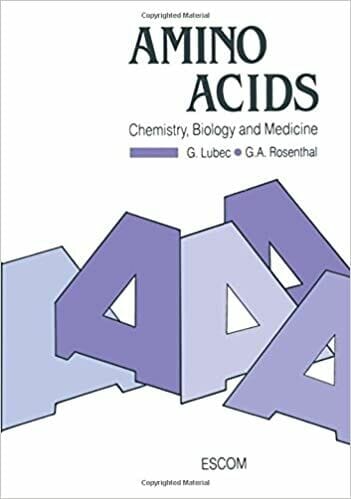



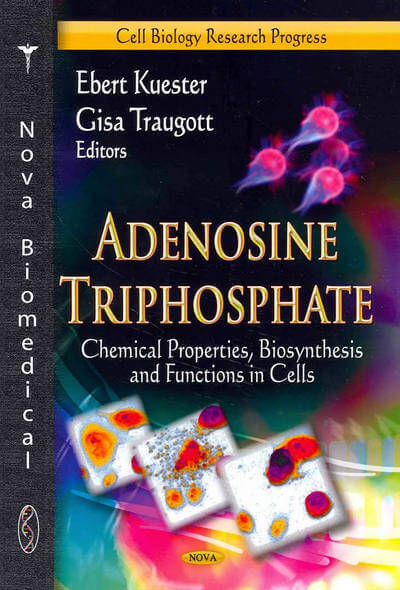
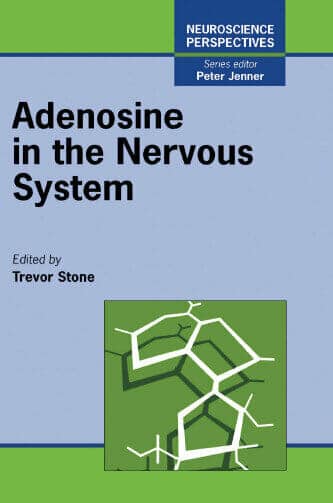
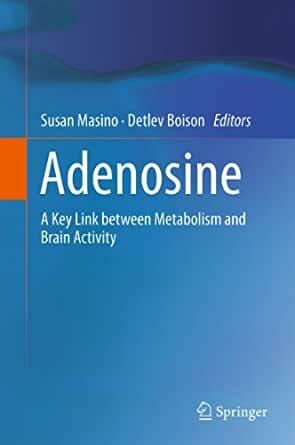
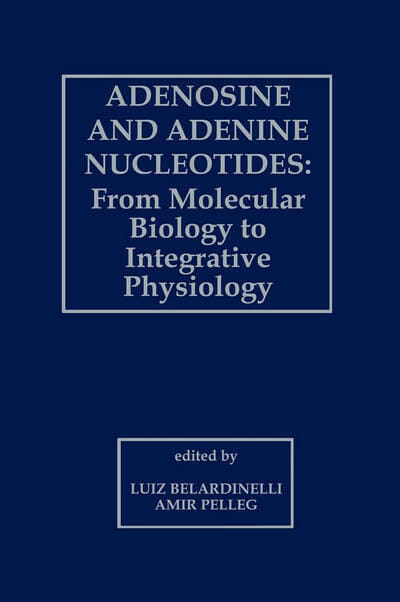
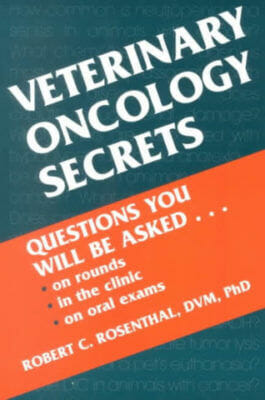
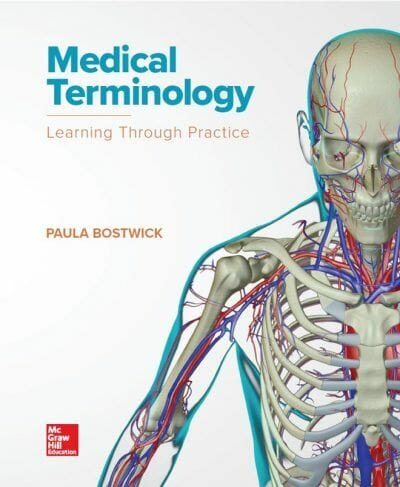

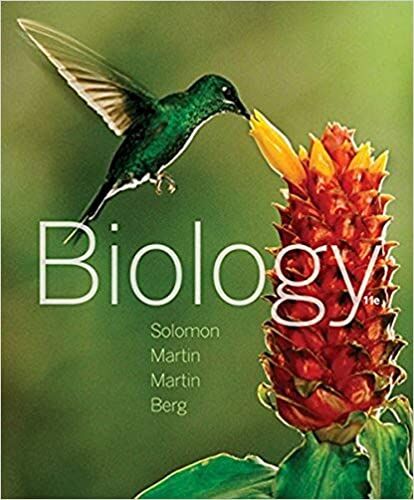










![Ettinger’s Textbook of Veterinary Internal Medicine 9th Edition [PDF+Videos] Ettinger’s Textbook of Veterinary Internal Medicine 9th Edition [True PDF+Videos]](https://www.vet-ebooks.com/wp-content/uploads/2024/10/ettingers-textbook-of-veterinary-internal-medicine-9th-edition-100x70.jpg)





